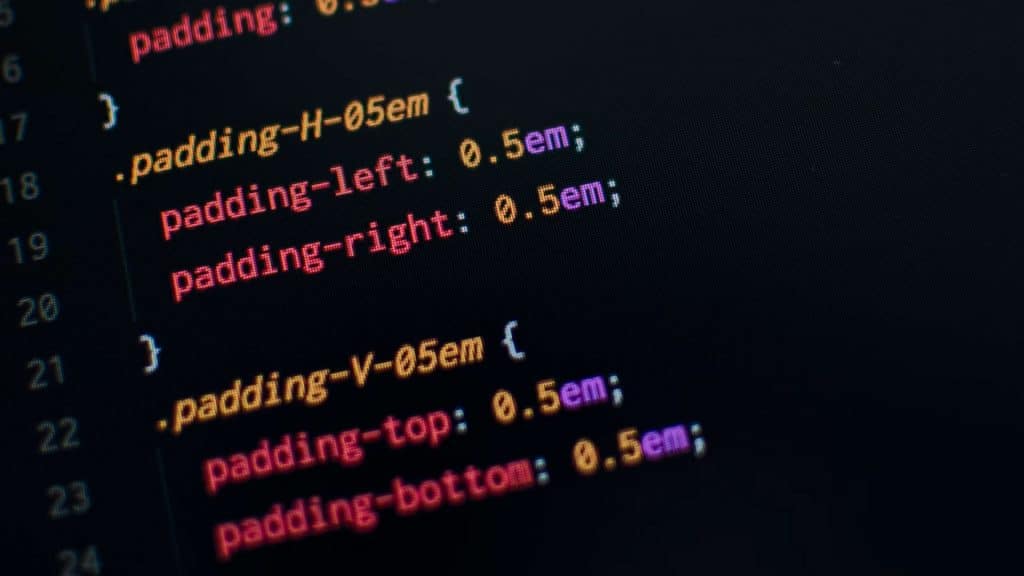JavaScript Front-End Development: Basics and Concepts
JavaScript is a high-level, interpreted programming language used for front-end web development. It enables developers to add interactivity and dynamic features to websites, enhancing the user experience. JavaScript is vital for front-end development as it allows you to manipulate web page elements, handle events, perform calculations, and interact with server-side resources.
Therefore, we created a helpful guide that will walk you through the basics of JavaScript and highlight a few mistakes to avoid.
The article covers:
- JS syntax essentials
- variables, data types, functions and objects
- methods to control the execution order of statements
- best frameworks and libraries to use

Table of Contents
JavaScript is a widely used programming language that plays a crucial role in front-end development. It was originally created by Brendan Eich in 1995 and has since become a cornerstone of modern web development. JavaScript is a client-side scripting language, meaning it runs directly in the user’s web browser, allowing it to interact with the Document Object Model (DOM) and dynamically modify web page elements.
One of the key advantages of JavaScript is its versatility. It can be seamlessly integrated into HTML and CSS, enabling developers to create dynamic and interactive websites. JavaScript is known for its simplicity and ease of use, making it an excellent choice for beginners learning web development.
JavaScript has evolved significantly over the years, with the introduction of ECMAScript standards that define the language’s syntax and features. The most widely supported version of JavaScript today is ECMAScript 6 (ES6), which introduced new functionalities such as arrow functions, classes, and modules.
As a developer, understanding JavaScript is essential for building modern web applications. Whether you want to create engaging user interfaces, handle form validation, fetch data from servers, or add animations and effects to your websites, JavaScript provides the tools and capabilities to bring your ideas to life.
In the following sections, we will delve deeper into JavaScript syntax, variables, data types, control flow, functions, and objects, equipping you with the foundational knowledge needed to write clean and efficient JavaScript code. Let’s embark on this journey to unlock the power of JavaScript in front-end development.
Table of Contents
Key Features of JavaScript
JavaScript offers a wide range of features and capabilities that make it a powerful tool for front-end development. Some key features include:
- Dynamic content. JavaScript allows you to modify and update web page content dynamically based on user interactions or external events.
- DOM manipulation. JavaScript provides methods to interact with the Document Object Model (DOM), enabling you to access and modify elements on a web page.
- Event handling. JavaScript allows you to respond to user actions, such as button clicks or form submissions, by executing specific functions.
- Asynchronous programming. JavaScript supports asynchronous operations, which enables non-blocking execution and enhances the performance of web applications.
- Browser compatibility. JavaScript is supported by all major web browsers, making it a versatile language for cross-browser development.
Basic JavaScript Syntax
To effectively use JavaScript, it’s crucial to grasp its syntax and understand the basics of writing JavaScript code. JavaScript uses a combination of keywords, operators, and punctuation to create instructions that the browser can execute.
In JavaScript, statements are used to perform specific actions or tasks. Each statement typically ends with a semicolon (;), although JavaScript also allows for the omission of semicolons in some cases due to automatic semicolon insertion. However, it’s generally considered good practice to include semicolons to make your code more readable and avoid potential issues.
JavaScript is a case-sensitive language, meaning that uppercase and lowercase letters are treated differently. For example, the variable “myVariable” is not the same as “myvariable.” This case sensitivity applies to variable names, function names, and any other identifiers within your code.
JavaScript supports single-line and multi-line comments. Single-line comments start with two forward slashes (//), while multi-line comments are enclosed between /* and */. Comments are helpful for adding explanatory notes to your code, making it easier for others (or your future self) to understand the purpose and functionality of specific code blocks.
In JavaScript, you can use variables to store and manipulate data. Variables are declared using the “var,” “let,” or “const” keyword, followed by the variable name. The “var” keyword was traditionally used for variable declarations, while “let” and “const” were introduced in ES6 as block-scoped alternatives.
Variables in JavaScript can hold various types of data, including numbers, strings, booleans, arrays, and objects. Numbers can be integers or floating-point numbers, and strings are sequences of characters enclosed in single quotes (”) or double quotes (“”). Booleans represent the logical values of true or false.
Operators in JavaScript allow you to perform operations on variables and values. Some common operators include arithmetic operators (+, -, *, /), assignment operators (=, +=, -=), comparison operators (==, ===, !=, !==), and logical operators (&&, ||, !).
Understanding the syntax and basics of JavaScript sets the foundation for writing functional code. In the following sections, we’ll explore variables and data types, control flow and conditional statements, as well as functions and objects, to deepen our understanding of JavaScript’s capabilities.
Javascript Variables
Variables play a crucial role in JavaScript, allowing you to store and manipulate data. In this section, we’ll dive deeper into working with variables and explore the various data types supported by JavaScript.
In JavaScript, variables are declared using the keywords “var,” “let,” or “const,” followed by the variable name. The “var” keyword has been traditionally used for variable declarations, while “let” and “const” were introduced in ECMAScript 6 (ES6) as block-scoped alternatives.
The “var” keyword declares a variable with function scope or global scope, depending on where it’s declared. Variables declared with “var” can be reassigned and redeclared within their scope. However, it’s important to note that “var” variables are subject to hoisting, which means they are moved to the top of their scope during the compilation phase.
The “let” keyword allows you to declare variables with block scope, limiting their visibility to the block in which they are defined. Variables declared with “let” can be reassigned but not redeclared within the same block.
On the other hand, the “const” keyword is used to declare variables that have block scope and are considered constants. Constants cannot be reassigned or redeclared once they have been initialized. However, it’s worth noting that the “const” keyword only makes the variable itself immutable, not the value it holds. If the variable contains an object or an array, you can still modify the properties or elements of that object or array.
Data types Javascript supports
- Numbers. JavaScript represents both integers and floating-point numbers. For example, you can assign a number to a variable using the syntax “let myNumber = 42;”.
- Strings. Strings represent sequences of characters and can be enclosed in single quotes (”) or double quotes (“”). For example, you can declare a string variable like this: “let myString = ‘Hello, world!’;”.
- Booleans. Booleans represent the logical values of true or false. They are often used in conditional statements and comparisons. For example, you can declare a boolean variable like this: “let isLogged = true;”.
- Arrays. Arrays are used to store collections of values in a single variable. They can contain elements of different data types and can be accessed by their index. For example, you can declare an array variable like this: “let myArray = [1, ‘two’, true];”.
- Objects. Objects allow you to group related data and functions together. They consist of key-value pairs, where the keys are strings (or symbols) and the values can be any JavaScript data type. For example, you can declare an object variable like this: “let myObject = { name: ‘John’, age: 30 };”.
So, in summary, Javascript can work with a rather large variety of data types.
Control Flow and Conditional Statements
Control flow and conditional statements in JavaScript allow you to control the execution order of statements and make decisions based on specific conditions. They provide the ability to create branching paths in your code, enabling you to create more dynamic and responsive applications.
One of the most commonly used conditional statements in JavaScript is the “if…else” statement. It allows you to specify a condition and execute different blocks of code depending on whether the condition is true or false. The general syntax of the “if…else” statement is as follows:
if (condition) {
// code block to execute if the condition is true
} else {
// code block to execute if the condition is false
}
Here’s an example that demonstrates the usage of the “if…else” statement:
let age = 18;
if (age >= 18) {
console.log("You are eligible to vote!");
} else {
console.log("You are not eligible to vote yet.");
}
In this example, if the value of the variable “age” is greater than or equal to 18, the code block inside the first set of curly braces will be executed and the message “You are eligible to vote!” will be logged to the console. Otherwise, if the condition is false, the code block inside the second set of curly braces will be executed, logging the message “You are not eligible to vote yet.”
In addition to the “if…else” statement, JavaScript also provides the “switch” statement for multi-way branching. It allows you to compare a value against multiple cases and execute the code block associated with the matching case. Here’s an example:
let day = "Monday";
switch (day) {
case "Monday":
console.log("It's the start of the week.");
break;
case "Friday":
console.log("It's the end of the week. Time to relax!");
break;
default:
console.log("It's a regular day.");
}
In this example, the value of the variable “day” is compared against different cases. If it matches one of the cases, the corresponding code block will be executed. If no match is found, the code block inside the “default” case will be executed. The “break” keyword is used to exit the switch statement once a match is found, preventing the execution of subsequent cases.
Apart from the “if…else” and “switch” statements, JavaScript also provides other conditional statements like the “else if” statement, which allows for more complex conditions, and the “ternary operator” for concise conditional expressions.
Control flow in JavaScript is not limited to conditional statements. You can also use loops, such as the “for” loop and the “while” loop, to iterate over data structures or execute a block of code repeatedly until a certain condition is met. These looping constructs offer powerful ways to automate repetitive tasks and process large sets of data.
By understanding and effectively using control flow and conditional statements, you can make your JavaScript code more dynamic and responsive. In the next section, we’ll explore functions and objects, which are essential concepts in JavaScript for organizing and reusing code.
Functions and Objects in JavaScript
Functions and objects are fundamental concepts in JavaScript that enable you to organize and reuse code. They provide a way to encapsulate functionality and create modular code structures, enhancing the maintainability and reusability of your JavaScript applications.
A function in JavaScript is a reusable block of code that performs a specific task or calculation. It allows you to define a set of instructions that can be executed multiple times with different inputs. Functions can have parameters, which act as placeholders for values passed into the function when it is called. Here’s an example of a function:
function greet(name) {
console.log("Hello, " + name + "!");
}
greet("John"); // Output: Hello, John!
greet("Jane"); // Output: Hello, Jane!
In this example, we define a function called “greet” that takes a parameter called “name.” The function logs a greeting message to the console, using the value of the “name” parameter. We can call the function multiple times, passing different values for the “name” parameter.
Functions can also return values using the “return” keyword. Here’s an example:
function addNumbers(a, b) {
return a + b;
}
let result = addNumbers(3, 5);
console.log(result); // Output: 8
In this example, the function “addNumbers” takes two parameters, “a” and “b,” and returns their sum. We call the function with the values 3 and 5, and store the result in the variable “result.” Finally, we log the value of “result” to the console, which will be 8.
Objects in JavaScript are used to represent complex data structures. They allow you to group related data and functions together as properties and methods, respectively. Objects are created using curly braces {} and can be assigned to variables. Here’s an example:
let person = {
name: "John",
age: 30,
greet: function() {
console.log("Hello, my name is " + this.name + ".");
}
};
console.log(person.name); // Output: John
console.log(person.age); // Output: 30
person.greet(); // Output: Hello, my name is John.
In this example, we create an object called “person” with properties for the name and age. The “greet” property is a function that logs a greeting message using the “name” property. We can access the properties of the object using dot notation (e.g., person.name, person.age) and call the function using the dot notation as well (e.g., person.greet()).
Objects in JavaScript can also be defined using constructor functions or class syntax, which provide a way to create multiple instances of similar objects with shared properties and methods.
Frameworks and Libraries
There are several popular front end frameworks and libraries that are built on top of JavaScript. Some notable ones include:
- React library for building user interfaces. React allows developers to create reusable UI components and manage application state efficiently.
- Angular framework developed by Google. It provides a complete solution for building complex web applications with features like data binding, dependency injection, and routing.
- Vue.js progressive framework. Vue.js focuses on simplicity and flexibility, making it easy to integrate with existing projects or build new ones from scratch.
And the main difference between frameworks and libraries is that first control the flow, while second provide tools you control.
Best Practices for Writing Clean Javascript Code
To ensure clean and maintainable JavaScript code, consider following these best practices:
- Use descriptive variable and function names. Choose meaningful names that accurately reflect the purpose and functionality of variables and functions, making the code more readable.
- Organize code into functions. Break down your code into reusable functions that perform specific tasks, promoting modularity and reusability.
- Comment your code. Add comments to explain complex logic or provide context for future developers who might work with your codebase.
- Avoid global variables. Minimize the use of global variables as they can lead to naming conflicts and make code harder to manage. Instead, use local variables within functions whenever possible.
- Regularly test and debug. Perform thorough testing and debugging to identify and fix issues early in the development process.
- Follow coding conventions. Adhere to established coding conventions and style guides to maintain consistency and improve code readability.
Use Cases of JavaScript in the Browser
JavaScript finds extensive use in various front-end development scenarios. Some common use cases include:
- Form validation. JavaScript can validate user inputs on web forms, ensuring that the provided data meets specific criteria before submission.
- Dynamic content updates. JavaScript allows developers to fetch and update content on a web page without requiring a full page reload. This feature is often used in chat applications, social media feeds, or real-time data updates.
- Interactive web elements. JavaScript enables the creation of interactive elements such as image sliders, drop-down menus, and tooltips that enhance the user experience.
- AJAX requests. JavaScript supports Asynchronous JavaScript and XML (AJAX) requests, allowing web pages to retrieve data from a server without refreshing the entire page.
By enabling seamless user interactions and real-time updates, JavaScript remains a cornerstone of modern front-end development.
Frequently Asked Questions
While HTML and CSS are markup languages used for structuring and styling web content respectively, JavaScript is a programming language. HTML defines the structure of web pages, CSS handles their appearance, and JavaScript focuses on the behavior and interactivity of web elements. JavaScript enables you to create responsive designs, handle user interactions, and dynamically modify web content.
JavaScript offers a wide range of features and capabilities that make it a powerful tool for front-end development. Some key features include:
- Pick a framework your team is familiar with. If your team lacks experience, you may need to hire additional resources experienced in the desired framework.
- Ensure the front-end framework aligns with your backend to avoid integration challenges. If your backend is already built, choose a framework that works well with it.
- For complex applications, select a framework based on MVC architecture to enable simultaneous development of functionalities. Lightweight frameworks may struggle with more intricate systems.
- Balance size and performance. Lightweight frameworks are suitable for simple projects, but complex systems require more robust options to avoid future performance issues.





